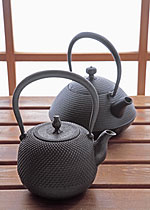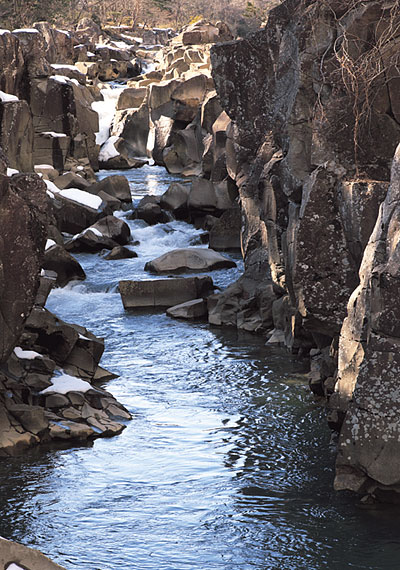Japan Travelogue Hiraizumi
After all that history, the next day might be well spent enjoying the scenery of two unusual gorges nearby.
The first one, Genbi-kei Gorge, has huge rocks carved by the Iwai River, which has its source on Mount Kurikoma. The gorge’s most imposing stretch is about 2 km long. It is a truly beautiful spot to enjoy nature in any season—cherry blossoms in the spring, thick summer vegetation, brilliant fall colors, the snow and ice of winter.
Tourists also find the “high-flying dumplings” worth the trip. A cable stretches from a place near small buildings on the rock floor of the gorge to a high spot on the far bank. A large wooden cask slides down the cable. Put money in it, give a signal, and the cask is pulled up and away. Then it comes back with your dumplings and green tea.
The other scenic gorge, Geibi-kei, was formed by the Satetsu River working its way through limestone. Cliffs rise straight up more than 100 meters. The fantastic rock formations and huge boulders are best seen from a boat. Cruises last about 90 minutes for the round trip.
Skillfully handling the long oar is Chiba Miyuki. She once worked in an office, and is sometimes asked why she quit for this job. “After seeing the smiling faces of tourists after their cruise, I realized I wanted to work with people, and make them happy.”
Chiba sings a traditional Geibi rowing song as she pushes on the oar. Her voice rings out strong and clear, echoing back from the walls of rock, and her passengers clap with appreciation. Time flows slowly here in the Geibi-kei Gorge. ![]()
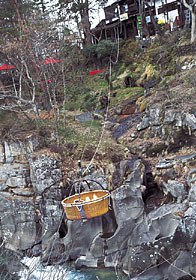
A cask descends from the opposite side of the gorge, holding dumplings for waiting customers.
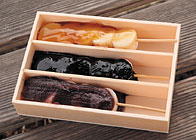
The dumplings come in three flavors, one for each skewered set: soy sauce, sesame, and adzuki bean paste.
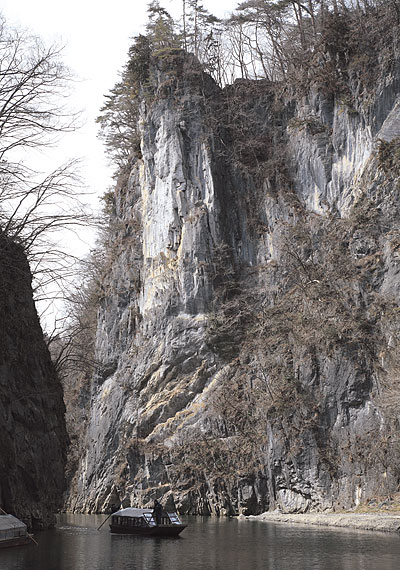
Going down the river in the Geibi-kei Gorge. The rocky cliffs remind us of an old Chinese ink painting.
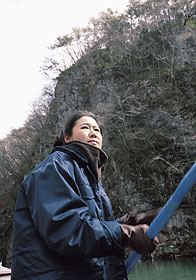
Chiba Miyuki is an expert at handling the long oar.

Maezawa produces Maezawa beef, said to be the ultimate in quality. (Maezawa is one station after Hiraizumi on the JR Tohoku Main Line.) Slices of soft beef are placed on top of sushi rice to make gyu no nigiri sushi. Served at a shop called Sukehachi-zushi. The “tuna from the land” dissolves in the mouth.
